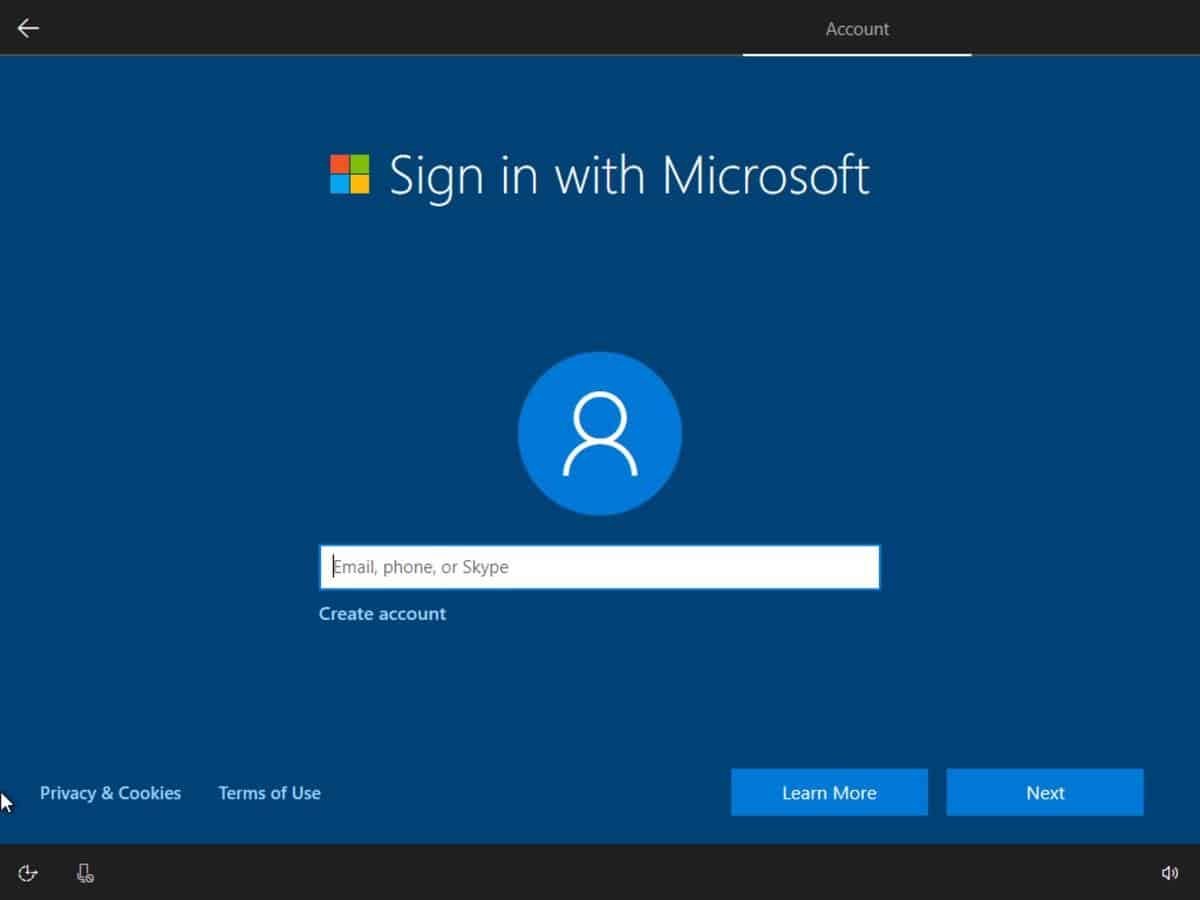Installing Windows 10 without a Microsoft account seems to be getting harder and harder as Microsoft has activated a rather controversial choice for more users around the world.

A change discovered in Windows 10 last year made it much more difficult to set up the operating system with a local account, as Microsoft prefers we all have an in-company account to connect to our operating system.
So every device of Windows 10 that is connected to the Internet will no longer show the option to create a local account when setting up the operating system, but instead prompts users to sign in or create a Microsoft account.
Using a Microsoft account for Windows 10 brings a number of benefits, such as synchronization options, but on the other hand, there are many who do not want to use this method. But starting last year, creating a local account is not so easy.
Because Internet-connected devices had only one option in the Windows 10 configuration that required you to create a Microsoft account, the solution was to disconnect the computers from the Internet.
If no Internet connection is detected, then Windows 10 installation displays an option to create one local account.
The German by clicking here Dr. Windows he says that this approach usesται αυτή τη στιγμή και σε άλλες χώρες, αφού η Microsoft αρχικά την επέβαλε μόνο στις Ηνωμένες Πολιτείες. Παρά την review, Microsoft decided to stick with this idea as it wants more and more people to use Windows 10 with a Microsoft account.
For now, as mentioned above, the easiest way to set up a local account when setting up Windows 10 is to simply disconnect your device from the Internet.





